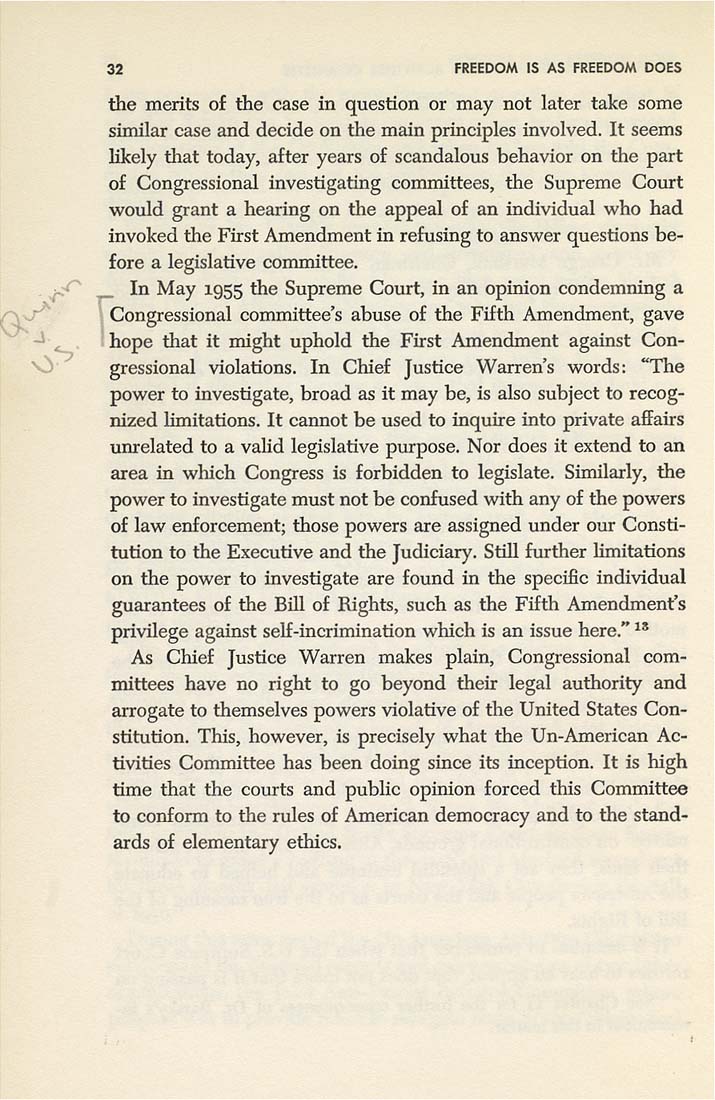32 FREEDOM IS AS FREEDOM DOES
the merits of the ease in question or may not later take some
similar ease and decide on the main principles involved. It seems
hkely that today, after years of scandalous behavior on the part
of Congressional investigating committees, the Supreme Court
would grant a hearing on the appeal of an individual who had
invoked the First Amendment in refusing to answer questions be¬
fore a legislative committee.
. ^•'' _ In May 1955 the Supreme Court, in an opinion condemning a
■J^ Congressional committee's abuse of the Fifth Amendment, gave
-^ ^ hope that it might uphold the First Amendment against Con-
O gressional violations. In Chief Justice Warren's words: "The
power to investigate, broad as it may be, is also subject to recog¬
nized limitations. It cannot be used to inquire into private affairs
um-elated to a valid legislative purpose. Nor does it extend to an
area in which Congress is forbidden to legislate. Similarly, the
power to investigate must not be confused with any of the powers
of law enforcement; those powers are assigned under our Consti¬
tution to the Executive and the Judiciary. Still further Hmitations
on the power to investigate are found in the specffic individual
guarantees of the Bill of Rights, such as the Fifth Amendment's
privilege against self-incrimination which is an issue here." ^'
As Chief Justice Warren makes plain. Congressional com¬
mittees have no right to go beyond their legal authority and
arrogate to themselves powers violative of the United States Con¬
stitution. This, however, is precisely what the Un-American Ac¬
tivities Committee has been doing since its inception. It is high
time that the courts and public opinion forced this Committee
to conform to the rules of American democracy and to the stand¬
ards of elementary ethics.
|








